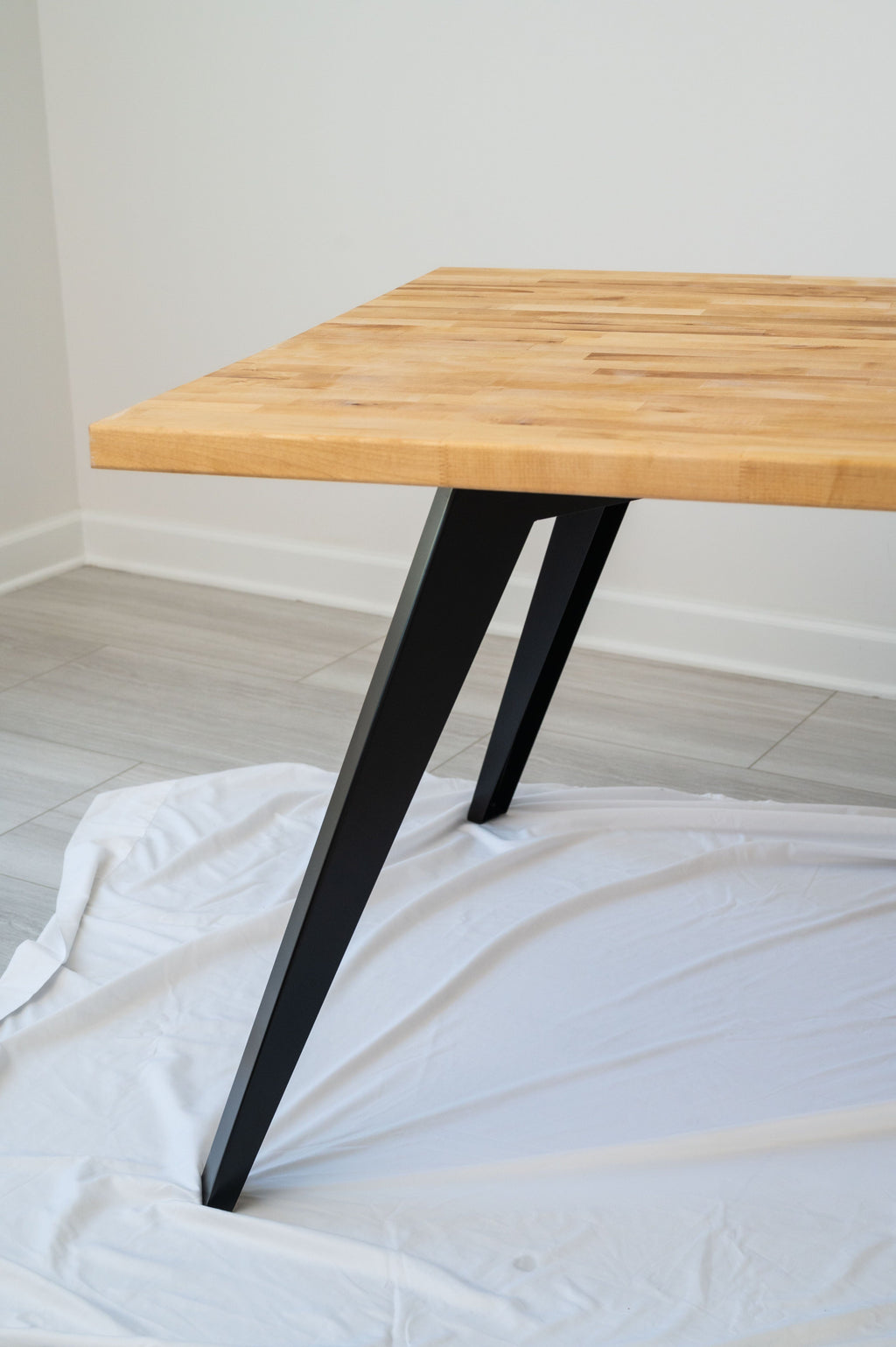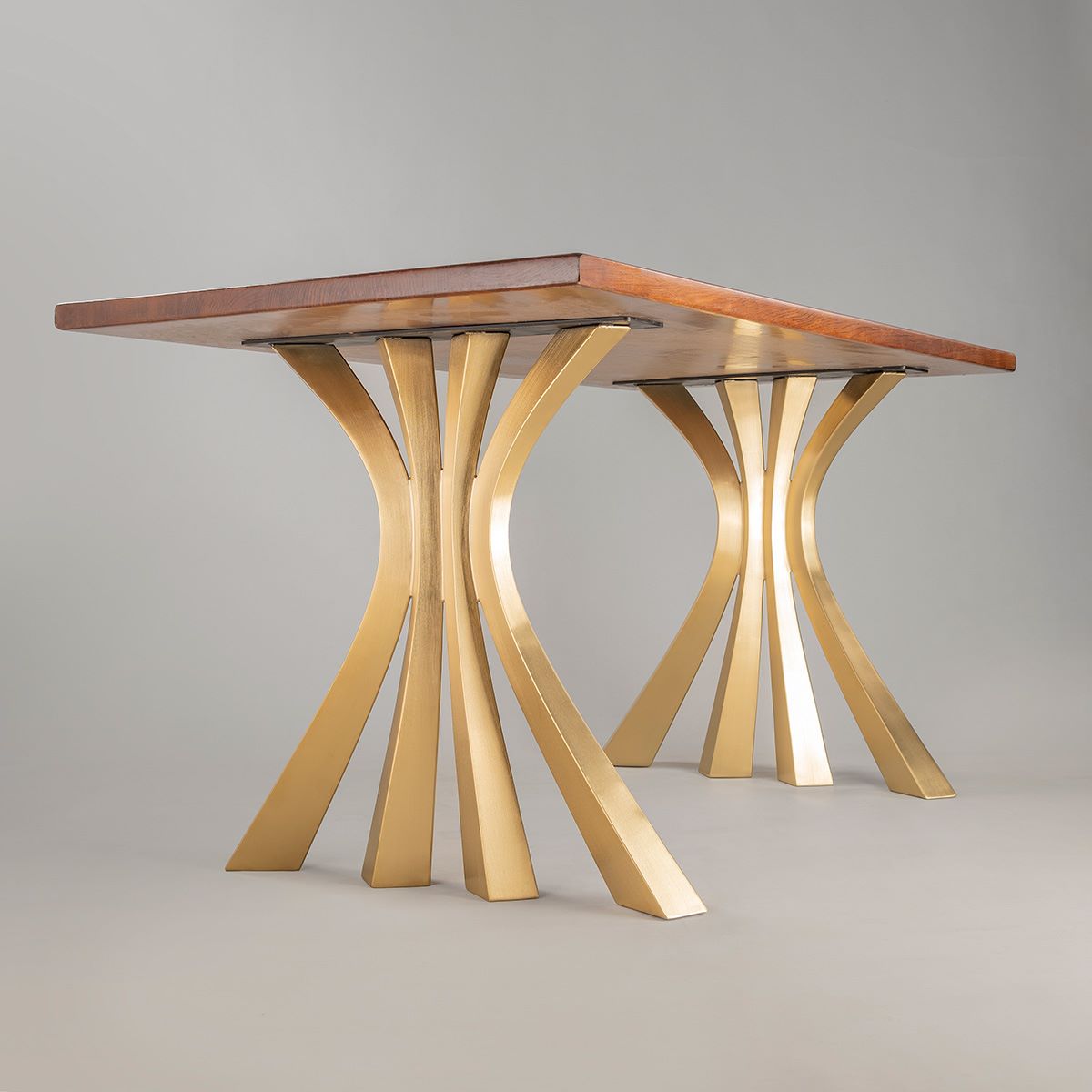Sturdy Workmanship in Every Piece of Dining Table Legs Wood Available
Sturdy Workmanship in Every Piece of Dining Table Legs Wood Available
Blog Article
Checking Out the Different Kinds of Table Legs Timber for Your Eating Space
The selection of dining table legs timber can exceptionally impact both the functional and aesthetic top qualities of your dining area. Solid timber options, such as oak and walnut, give a traditional look with unparalleled resilience, while crafted timber alternatives provide cutting-edge styles that simulate the richness of natural grains.
Strong Timber Options

Unlike engineered materials, solid timber is less vulnerable to warping and damage over time when appropriately kept. Each item of strong wood is one-of-a-kind, showcasing private characteristics that include to the charm and character of the eating table.
Additionally, strong timber can be ended up in countless methods, varying from natural oils to discolored surfaces, allowing homeowners to individualize their furniture to match their style. In recap, picking strong wood for eating table legs not just ensures architectural integrity however likewise boosts the visual appeal of the eating location, making it a rewarding financial investment for any home.
Engineered Wood Alternatives

Plywood, built from numerous layers of wood veneer, is specifically solid and stable, making it an excellent selection for dining table legs. Its split composition permits it to hold up against modifications in humidity and temperature much better than traditional strong timber. MDF, on the other hand, offers a smooth surface area for paint or veneering, making it possible for developers to attain a refined look while maintaining structural honesty.
When picking crafted timber options, it is crucial to consider the designated use and preferred aesthetic. These products not only enhance the performance of dining rooms yet additionally allow for higher design flexibility, making certain that contemporary and standard designs can coexist sympathetically.
Reclaimed Wood Includes
Reclaimed timber supplies a distinct blend of sustainability and character, making it an increasingly popular selection for dining table legs. Sourced from old barns, manufacturing facilities, and various other structures, recovered wood symbolizes a history that new products simply can not duplicate. Each item lugs its very own story, noted by distinct flaws, knots, and differing grain patterns, which contribute to a table's distinct aesthetic allure.
In enhancement to its aesthetic charm, reclaimed timber is an eco-friendly choice. By repurposing previously used products, it decreases the need for brand-new lumber, hence assisting to preserve forests and reduce waste. This lines up with a growing customer choice for lasting practices in furnishings.
Furthermore, redeemed timber is typically a lot more durable than recently collected wood because of its age. The natural drying process that redeemed timber goes through lead to a denser and more powerful product, making it much less vulnerable to warping and splitting. This boosts learn the facts here now the durability of eating tables, allowing them to withstand the rigors of everyday usage.
Softwood vs. Wood
When choosing table legs, comprehending the distinctions in between softwood and hardwood is crucial for accomplishing both practical and visual objectives. Softwoods, acquired from coniferous trees, such as yearn and cedar, are characterized by their lighter weight and convenience of adjustment. They commonly display an even more rustic appearance, making them suitable for country-style or informal dining rooms. Softwoods are normally much less durable than hardwoods, which can be a consideration for households or those seeking longevity in their furniture.
On the various other hand, hardwoods, sourced from deciduous trees like cherry, maple, and oak, are renowned for their thickness, toughness, and resilience. The intricate grain patterns and rich shades of hardwoods offer a ageless and innovative charm, making them optimal for formal dining settings. While hardwoods have a tendency to be much more costly and larger, their strength against deterioration typically validates the investment.
Ultimately, the choice between softwood and hardwood for eating table legs must align with your style vision, use demands, and budget plan, guaranteeing that your dining area reflects your personal design while continuing to be practical gradually.

Treatments and finishes
The visual charm and longevity of table legs can be dramatically improved with different surfaces and therapies. These procedures not only secure the timber from damage yet also elevate its look, enabling it to match varied indoor styles.
One common treatment is tarnishing, which permeates the wood and enhances its natural grain while including shade. Stains supply an abundant, elegant appearance, enabling house owners to match their furniture with existing decoration. Conversely, clear finishes such as polyurethane or varnish produce a protective layer without changing the timber's initial tone, making sure toughness against deterioration.
Additionally, all-natural oils, like tung or linseed oil, nourish the wood and provide a subtle shine, all while being green. These oils permit the surface area to breathe, avoiding wetness build-up and prospective warping.
For those seeking a rustic beauty, weather-beaten or distressed coatings can be applied to create an aged look, adding personality to the piece. Ultimately, the choice of coatings and treatments depends on personal choice, desired aesthetics, and the particular wood kind, making it necessary to consider these elements when selecting dining table legs for your space.
Conclusion
Strong timbers, crafted alternatives, and reclaimed choices each offer distinct benefits, providing to my site numerous choices and demands. Ultimately, the selection of timber kind ought to straighten with desired design, durability, and environmental considerations, enhancing the overall dining important link experience.
The option of eating table legs timber can profoundly affect both the useful and visual top qualities of your dining area - Dining Table Legs Wood. Solid timber choices, such as oak and walnut, supply a classic look with unparalleled toughness, while engineered wood options use cutting-edge designs that mimic the richness of natural grains. Strong wood uses a classic quality that can elevate the total style of an eating room. Each item of strong wood is distinct, showcasing specific characteristics that include to the appeal and character of the eating table
Moreover, recovered timber is commonly more long lasting than newly collected wood due to its age.
Report this page